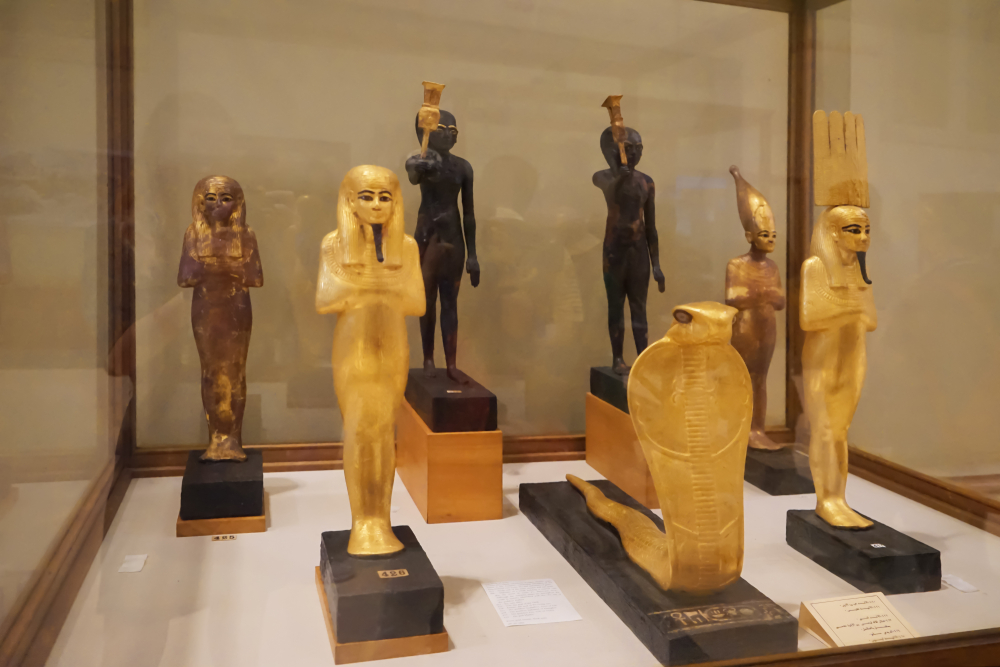Protecting Egyptian antiquities
Protecting Egyptian antiquities
Protecting Egyptian antiquities
-
Hannah
-
Hannah

Tomb-raiding in Egypt dates back thousands of years. The pharaohs had curses inscribed inside their tombs to deter robbers. In the tomb of Khentika Ikhekhi, for example, was etched something like,
Whoever shall enter my tomb will be judged… an end shall be made for him… I shall seize his neck like a bird… I shall cast the fear of myself into him.
Such curses have not, however, deterred people in modern times from helping themselves to the treasures of the past. The Victorian era saw a developing fascination with Egypt, and this was further stoked by archaeological digs in the early 20th century that uncovered amazing wonders – most famous of them, of course, being the tomb of Tutankhamun.
Fast-forward to the mid-1940s, the period in which Song of the Nile is set, and you find a thriving trade in Egyptian antiquities, a network of those who will obtain the antiquities, those who will smuggle them, and those who will purchase them – all of it illegal.
The dark trade is everywhere. As I write in Song of the Nile:
Phares… noticed illegal transactions being made everywhere. One time, a turbaned official had come to pay the hospital a visit and seeing in his office a few framed papyruses representing images of the Ancient Egyptian world, had warned against forgeries, hinting at genuine treasure to which he alone possessed the key to acquiring. Another time, at a gahwa baladi, old Egyptian café… an effendi, gentlemanly native, sitting next to him had, just by chance, possessed a wonderful scarab in his pocket for sale.
Some of the so-called antiquities for sale are forgeries, but by no means all. As Alastair Carlisle, consul at the British Embassy, explains in Song of the Nile:
‘The excavation of real artefacts happens alongside the work of forgeries. More and more diggers are colonising the western bank. They live rent-free among the tombs, driving donkeys or working in the fields during the day and spending their nights searching for treasure. We are aware that hundreds of families live in this grim way, spoiling the sites of the Ancient Egyptians for their livelihoods.’
The war had taken the tourists from Egypt, so it was no great surprise that desperate fellahin were looting. As Aida points out:
While foreign Egyptologists are here selling these artefacts for thousands of pounds to their foreign buyers, there will always be looters. They are simply supplying a market.

Song of the Nile: available to buy now
You may ask, why shouldn’t the people of Egypt loot and sell on their finds? As one character in the book puts it: ‘Who owns the past? Can we claim ancient artefacts as our cultural property?’ Aida believes passionately in preserving the antiquities in Egypt. She says:
‘Many would say that our connection to our ancestors is bound up with our identity as a nation. They have a value to us that is unique.’
Antiquities, Aida believes, belong in a museum (like those in the Museum of Egyptian Antiquities, pictured above). Aida’s father was of the same mind, and so imagine his horror and shame when he was accused of the theft and illegal possession of Egyptian antiquities. Found guilty, he was sentenced to five years in jail with hard labour, but he never even made it out of the courtroom: the agony of the verdict caused a fatal heart attack. Aida blames the smugglers, and is determined to uncover who exactly was behind the frame-up of her father.
Meanwhile, Phares is on his own mission to fight the smugglers. The British Embassy is actively engaged in helping local Cairo law enforcement to track down any smugglers of antiquities, and Phares has agreed to spy for them to infiltrate a particularly large smuggling ring, one which has many branches across Egypt and beyond to Libya and Sudan. Most tomb-robbers, it appears, are in the employ of the leader of the ring, the shadowy El Kébir.
As Aida and Phares dig deep to unearth the dark vein of treachery and criminality in their land, one thing is certain: they are in just as much danger as those tomb-robbers of old who risked the curse of the pharaoh.
Headline photo credit: Africa Studio/Shutterstock.com